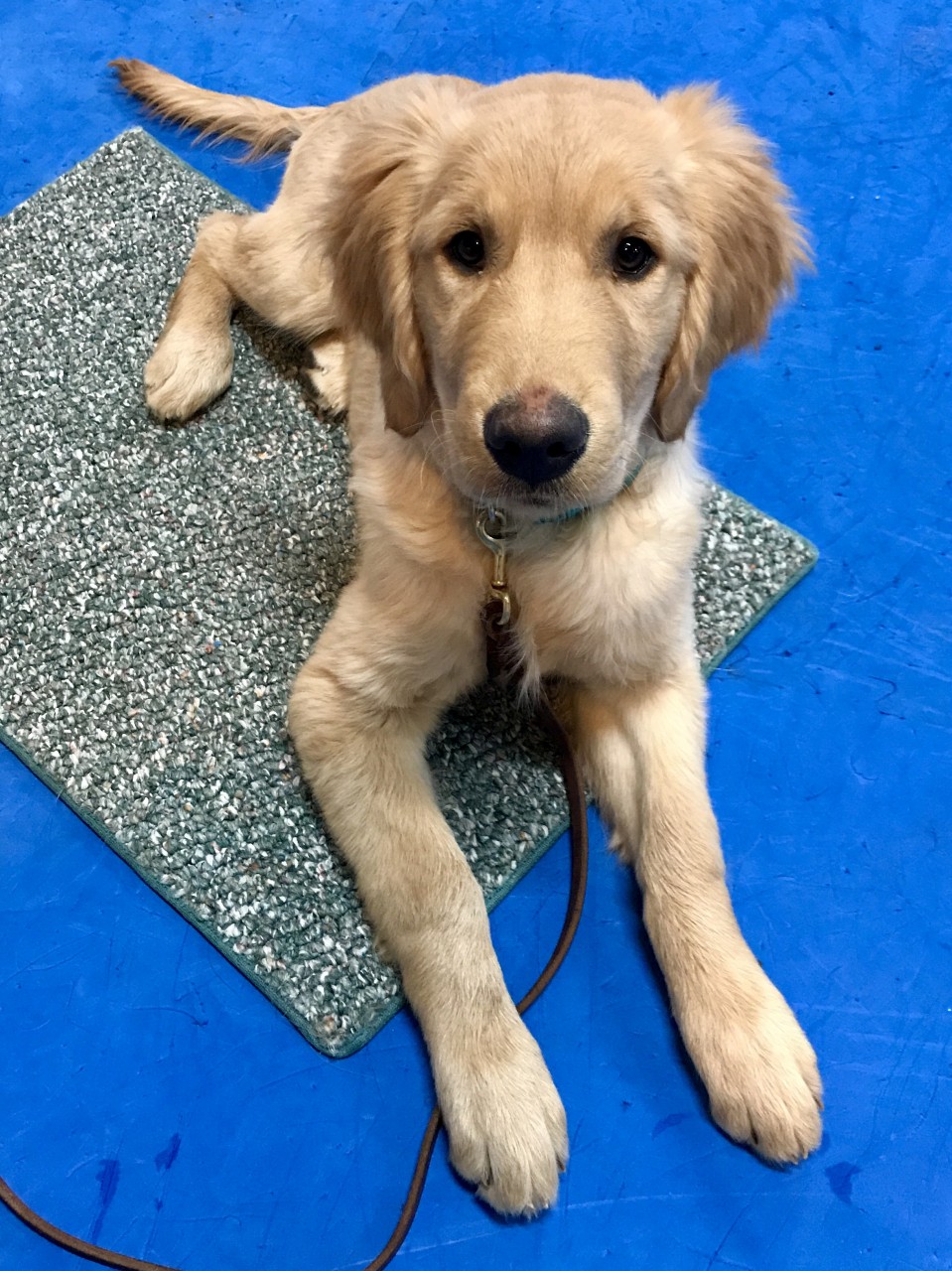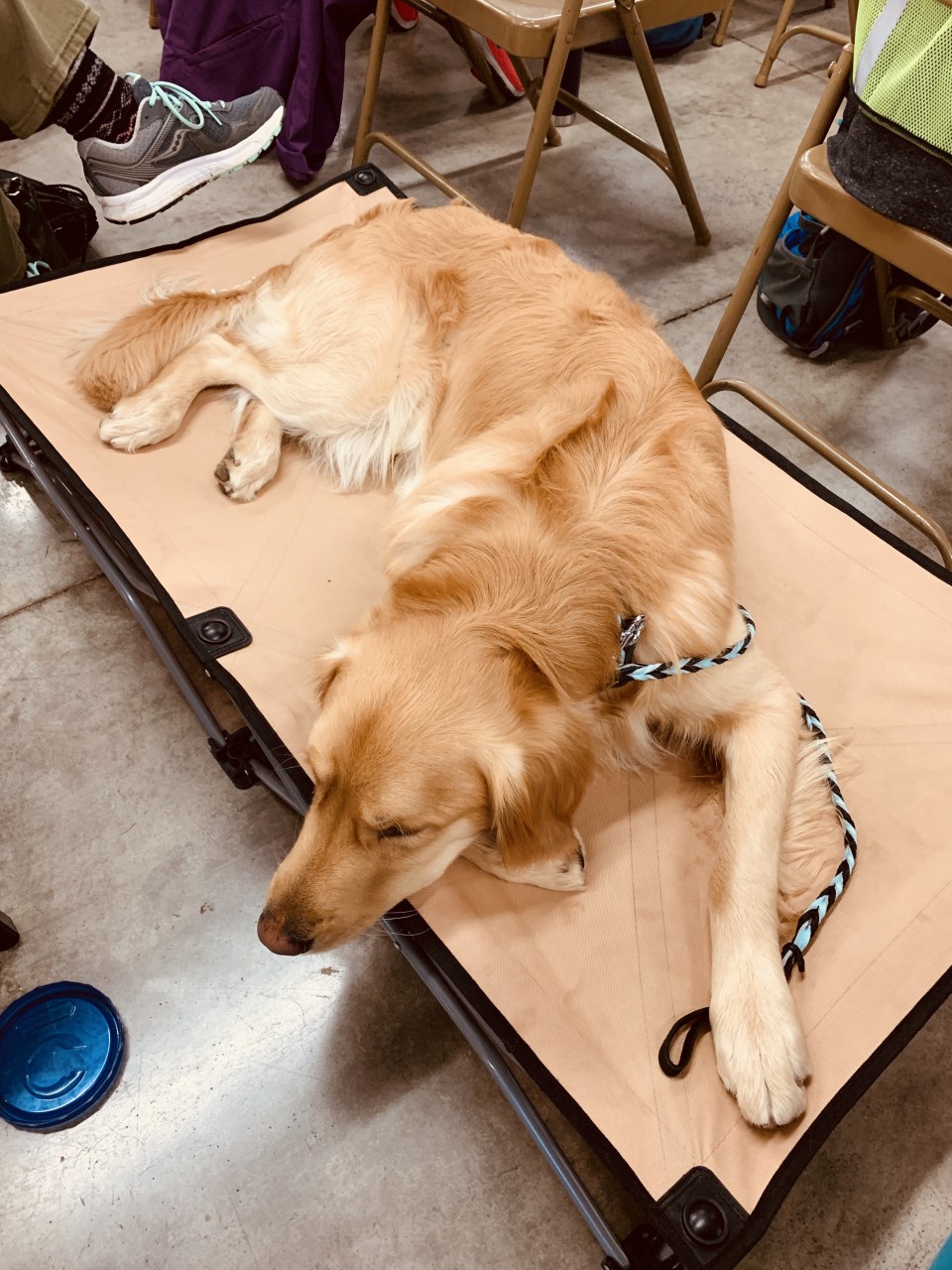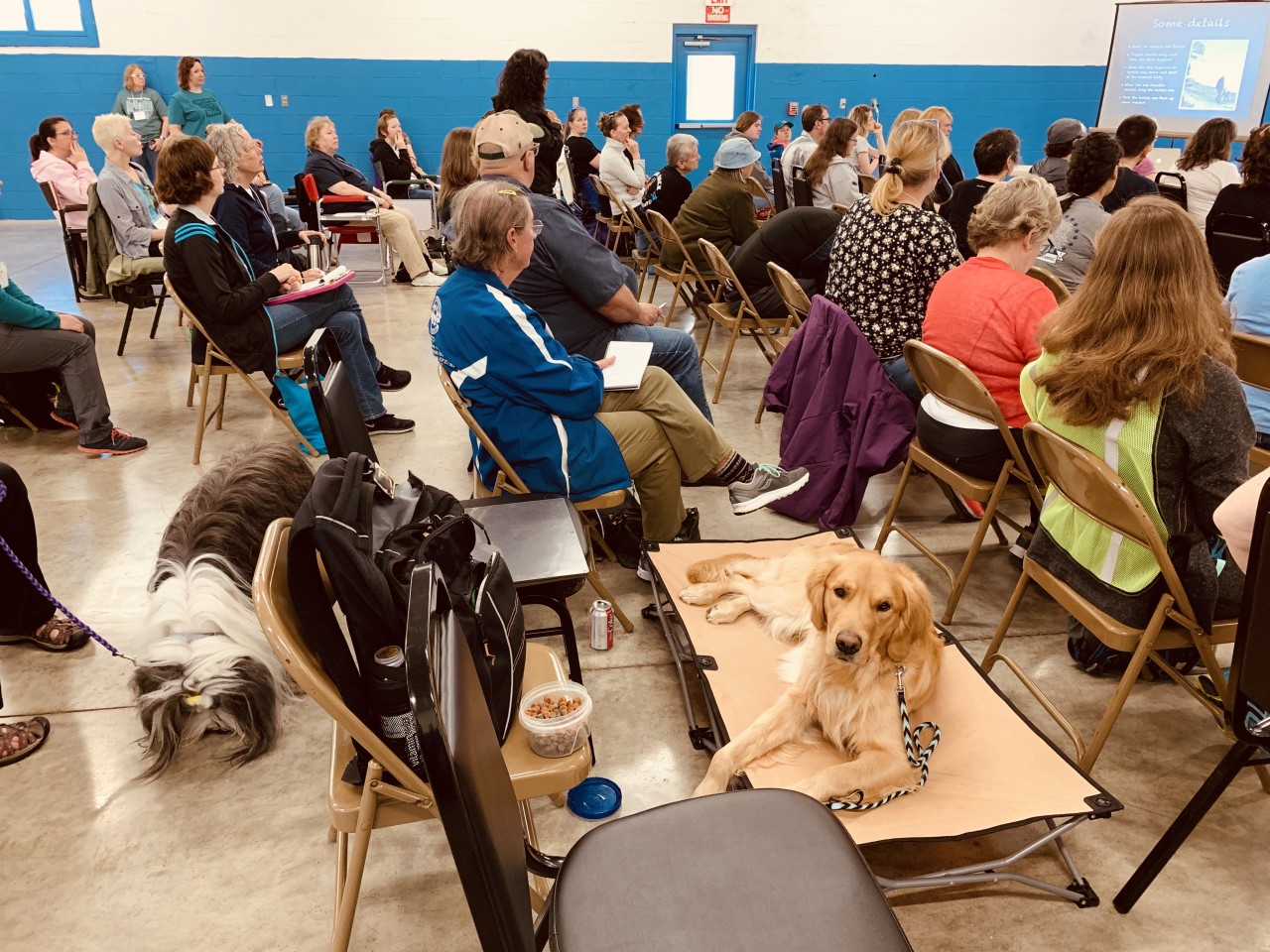Want a Relaxed Down Stay? Stop Rewarding It!
My young golden Excel was super quick to learn stay. He'd lay down on his station or on the ground at my feet and stay there – all while staring at me intensely.
If I ignored him, he'd sigh loudly or flip onto his hip or put his chin on the ground. I remember how he would purposely look away from me, with his eyes rolled toward me to see if I was going to give him a treat. Or he'd look away and snap his head back toward me in anticipation of the reward. He was offering all the relaxation behaviors I spent months rewarding him for in an attempt to train a relaxed down stay.
Instead of a calm dog I had a dog that was constantly working, offering behaviors, and seeking reinforcement. Not the picture I wanted.
What goes wrong when teaching a relaxed down stay
What happened?
Because I continued to reward the stay at a high rate, Excel learned that his station was a place to earn reinforcement instead of relaxing. Excel was offering behavior to earn more cookies. What I really want is for him to relax. What to do?
Because he had a good understanding of staying, it was time to reduce the frequency of reinforcement! I simply stopped throwing him cookies while on the station and, over time, he stopped offering behaviors and learned to relax.
Fast forward a year or so, and Excel now relaxes in a down stay or on his station. He'll actually lay his head down and look away from me. No more offering behaviors. No more staring intensely at me. He just hangs out calmly. Yay!!
But wait! Aren't we supposed to reinforce behavior we want?
Yes! Of Course! Once he understood the stay and was offering behaviors, I was actually reinforcing the behaviors he was throwing, not the stay. The relaxation that I wanted was not happening!!
When I stopped rewarding Excel during the stay, he stopped working for the food. He stopped throwing out behaviors because he was no longer working to earn a treat. He started to relax. It was quite amazing! Here I thought all along that I was shaping relaxation by rewarding behaviors that indicated he was starting to relax. Instead, I created a monster that learned to offer all the relaxation behaviors, but never actually relax.
Okay, but ...how does the dog learn to stay if we don't reinforce the stay?
Teaching a stay: when to use treats (and when to stop)
Just like everything else we train, rewarding during the teaching process is very important. I need to build value for the stay behavior. I start the stay by using rapid treats, then slow treats. Then I very slowly increase duration, introduce distractions, and add distance.
During this training I am rewarding the dog for the stay.
Once we have a pretty good stay, and I can move around and ignore the dog, and the dog can be successful despite distractions in the environment, then I must go through the process of reducing reinforcement by rewarding less frequently and begin doing stays without rewards.
I start with less duration to begin with. I start adding distractions and increasing distance.
If the dog makes a mistake, I simply put the dog back. I will re-cue the down if necessary, or gently take the dog by the collar and lead him/her back to the station. It's all very neutral, but the dog quickly learns that if a mistake is made, s/he will simply be returned to the stay.
How do your dogs know when it is time to get up?
A clear release from the stay is as important as the stay itself, maybe more important. I want my dog to understand that staying in place will result in getting released to work, and therefore the opportunity to earn rewards!
My dogs find working with me very reinforcing and exciting. To teach this concept, I train a very clear release that I use every time. I don't want there to be any confusion about the release, so I have a specific chain of events I follow that the dog understands. This allows me to move about, talk and even look at my dog without him getting up.
When I want to release him, I use the trained set of cues and he hops into action. That chain of events can be as simple as one word or a collection of physical and verbal cues.
What are mine? 1) I am still, 2) I look directly at the dog, 3) I pause, and 4) I say break without any movement. When the dog reaches me, I ask for a very simple easy behavior like touch or sit, then I reward the behavior. From there we will start training.
What if a relaxed down stay isn't possible?
Should you never reward the stay again? Of course you should sometimes!
If you see that an environment you are in makes staying very difficult, you may want to reinforce the stay. Your dog isn't relaxing in that scenario anyway, but you do want them to stay, so reward that. Just know what you are rewarding.
The stay!!
For example, Excel finds being near dogs running agility or dock diving very difficult, and it takes all his concentration just to stay. He is not going to relax! When we are in that situation, I do reward him for the stay. Hopefully, sometime in the future, he will be able to relax in those situations and I'll be able to reduce the reinforcement.
Perhaps by the time he's 10 years old!!
Check out Nicole's class, Rock-Solid Stays for Competition & Real Life, starting June 1, 2020!
By accepting you will be accessing a service provided by a third-party external to https://www.fenzidogsportsacademy.com/


